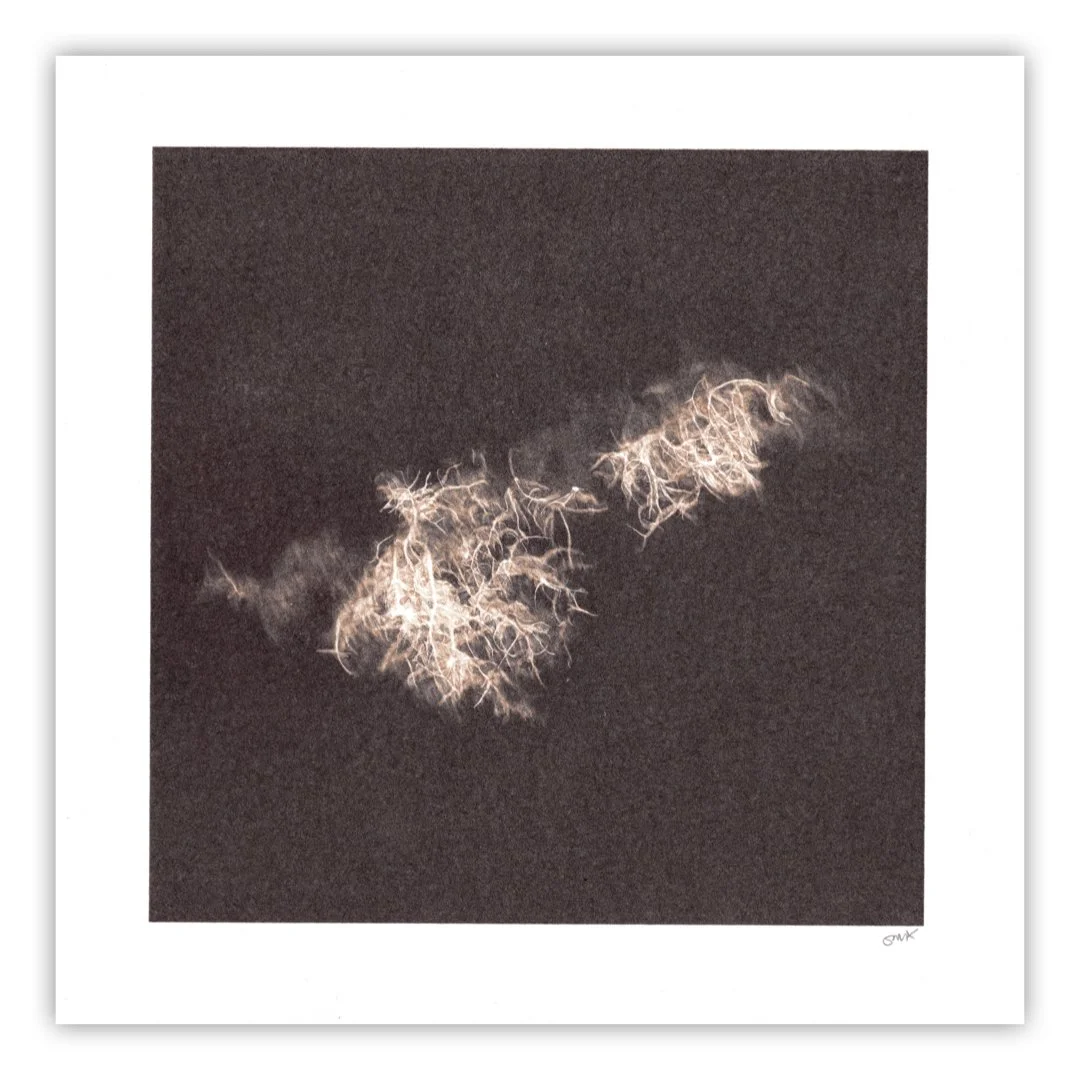Usnea
Generative software, drawing robot, flatbed scanner, Fisher ballpoint pens, on Aquafine hot pressed watercolour paper. 30 x 30cm unframed. One off drawing (this is not a print).
This drawing is made of six layers of ballpoint pens (brown and black) with different weights attached. There are over a million lines in this drawing, totalling around 5 miles of ink, and it took three days for the plotting robot to draw. The drawing is based on a flatbed scanner image of a sample of beard lichen found in western scotland.
I am interested in the uncanny effect of using one of the most humble and familiar writing implements in the world - the ballpoint pen - to create a drawing with so much density of ink. The juxtaposition of the familiar ink and the image of the lichen created directly from a flatbed scanner leaves a sense of ambiguity. Is this a drawing or a photograph, or something else entirely?
For each drawing sold, I will donate £5 to Trees for Life, to offset carbon and support the rewilding of the Scottish Highlands.
N.B. The ink in ballpoint is robust, but not immune to UV light, so please mount this picture away from direct sunlight to avoid the colours fading. If possible, it would be good to use UV filtering glass in any framing.
Generative software, drawing robot, flatbed scanner, Fisher ballpoint pens, on Aquafine hot pressed watercolour paper. 30 x 30cm unframed. One off drawing (this is not a print).
This drawing is made of six layers of ballpoint pens (brown and black) with different weights attached. There are over a million lines in this drawing, totalling around 5 miles of ink, and it took three days for the plotting robot to draw. The drawing is based on a flatbed scanner image of a sample of beard lichen found in western scotland.
I am interested in the uncanny effect of using one of the most humble and familiar writing implements in the world - the ballpoint pen - to create a drawing with so much density of ink. The juxtaposition of the familiar ink and the image of the lichen created directly from a flatbed scanner leaves a sense of ambiguity. Is this a drawing or a photograph, or something else entirely?
For each drawing sold, I will donate £5 to Trees for Life, to offset carbon and support the rewilding of the Scottish Highlands.
N.B. The ink in ballpoint is robust, but not immune to UV light, so please mount this picture away from direct sunlight to avoid the colours fading. If possible, it would be good to use UV filtering glass in any framing.
Generative software, drawing robot, flatbed scanner, Fisher ballpoint pens, on Aquafine hot pressed watercolour paper. 30 x 30cm unframed. One off drawing (this is not a print).
This drawing is made of six layers of ballpoint pens (brown and black) with different weights attached. There are over a million lines in this drawing, totalling around 5 miles of ink, and it took three days for the plotting robot to draw. The drawing is based on a flatbed scanner image of a sample of beard lichen found in western scotland.
I am interested in the uncanny effect of using one of the most humble and familiar writing implements in the world - the ballpoint pen - to create a drawing with so much density of ink. The juxtaposition of the familiar ink and the image of the lichen created directly from a flatbed scanner leaves a sense of ambiguity. Is this a drawing or a photograph, or something else entirely?
For each drawing sold, I will donate £5 to Trees for Life, to offset carbon and support the rewilding of the Scottish Highlands.
N.B. The ink in ballpoint is robust, but not immune to UV light, so please mount this picture away from direct sunlight to avoid the colours fading. If possible, it would be good to use UV filtering glass in any framing.





